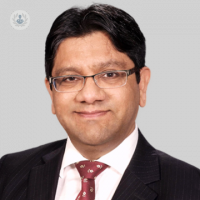Who should consider arm lift surgery?
Escrito por:Arm lift surgery is the latest topic of discussion in one of our latest articles here, as revered consultant plastic surgeon, Mr Muhammad Javaid, provides us with an expert, comprehensive overview of arm lift surgery.

What is arm lift or brachioplasty surgery?
Arm lift or brachioplasty surgery, also referred to as arm reduction surgery, is the removal of surplus skin and fatty tissues from inner portions of the upper arms, leaving the area slimmer and smoother.
Ageing, weight loss, as well as gravity can all cause the skin to stretch and make the arms appear droopy. Brachioplasty can help address the problem of sagging and loose appearance of the upper arms by removing the surplus fat and skin, giving it a smooth, toned contour.
How is brachioplasty surgery performed?
Arm lift surgery is generally performed under general anaesthesia. The process involves the removal of skin along the lower side of the arm by making incisions along the inner arm, leaving a thin scar on the inside of the arm. Excess tissues are removed and the circumference of the upper arm is reduced through this surgery.
The extent of correction depends on the looseness of the supportive tissues and the amount of excessive skin. Usually, the cuts extend from the elbow to the armpit, which helps in removing the superfluous skin in the centre of the arm. If surplus fat needs to be reduced during brachioplasty, liposuction can be performed to improve the contour. Incisions are closed with dissolvable sutures or stitches that are removed in one to two weeks post-surgery.
Who is the ideal candidate for this surgery?
Any person with excessive tummy fat and loose abdominal skin is an ideal candidate for this surgery. The procedure is also an alternative for both men and women who have lost weight after a period of obesity, and are subsequently suffering from skin laxity and high fat deposits in the abdominal region.
What does recovery from brachioplasty entail?
One to three days of hospitalisation may be necessary. Salt solution transfusions will be given to replenish the fluid content in your body, and drainage tubes will be inserted into the lower abdomen in order to drain serum and blood.
Moderate to severe pain may occur, and you will be prescribed appropriate painkillers. You will need to keep your knees and hips bent to lower the stress on your stitches. You will be provided with an abdominal corset to wear for about three weeks to give you additional support and reduce pain during the recovery period.
In terms of results, what can patients expect?
Noticeable scars may persist across the lower abdominal area and around the umbilicus. You may experience temporary numbness in the lower part of the abdominal wall which may persist in some cases. Swelling, bruising, and discharge may also occur. Patients, though, should be healed within a few weeks.
What are the main associated potential risks and complications?
There are, unfortunately, quite a few associated complications that may occur after brachioplasty surgery. These include:
- bleeding
- haematoma
- seroma formation
- infection
- temporary bruising and swelling
- scar-related problems
- asymmetry
- numbness around the scar
- skin tags
Mr Muhammad Javaid is a highly experienced and reputable consultant plastic surgeon. Make sure you schedule an appointment with him today by visiting his Top Doctors profile if you are considering undergoing arm lift surgery in the near future.


